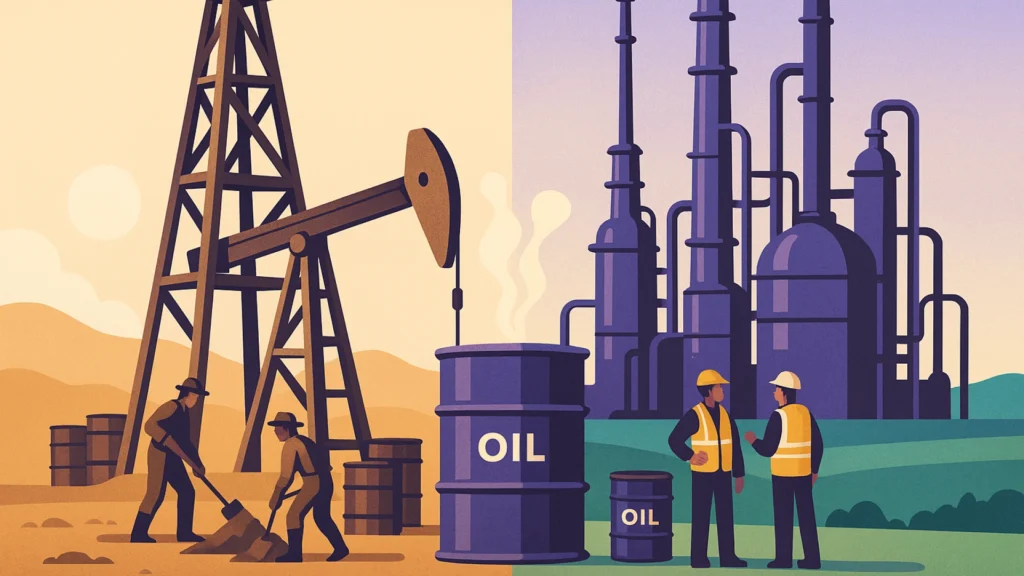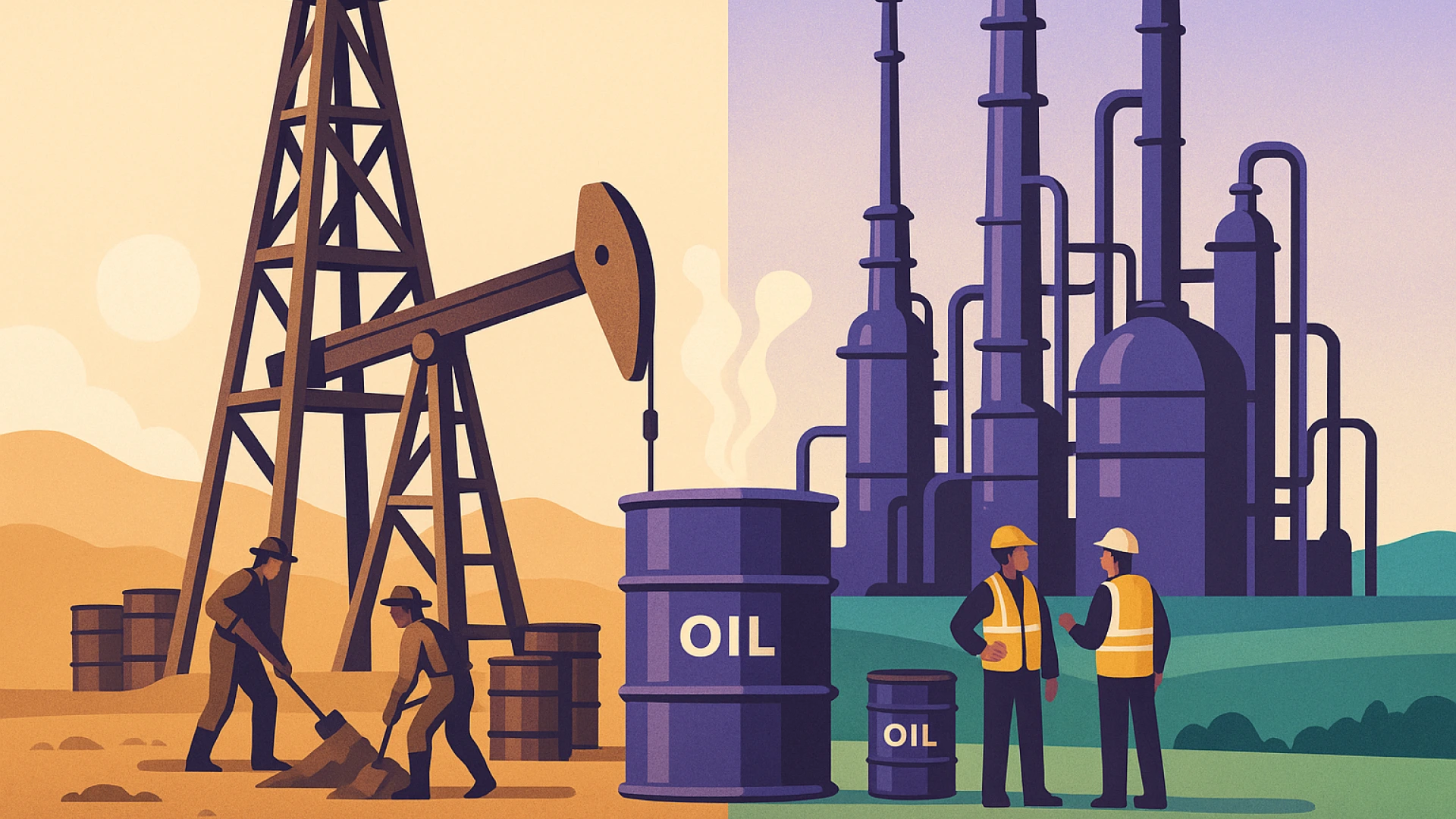Your Customer Conversations Are Crude Oil (And Most Companies Are Just Storing Barrels)
-
Clinton Folaranmi
- 10 min read

I. The Refinery Revolution
In 1859, Edwin Drake struck oil in Titusville, Pennsylvania. Within months, entrepreneurs flooded the region, drilling wells and filling barrels with black liquid gold. They sold it as crude petroleum for lamp oil, a single-purpose commodity.
Then, in the 1860s, everything changed. Refineries discovered that crude oil wasn’t one product, it was dozens. Through fractional distillation, that same barrel yielded gasoline for engines, kerosene for lamps, lubricants for machines, asphalt for roads, and petrochemicals for plastics. The oil didn’t change but the extraction process did.
The wildcatters who kept selling crude were left behind. The fortune went to those who built refineries.
Today, most organizations are wildcatters. They’re drilling thousands of customer conversations (sales calls, support tickets, customer interviews, onboarding sessions) and storing them in barrels. Some play them back occasionally. Most sit untouched in digital warehouses, a vast reserve of raw material that never gets refined.
Your customer conversations are crude oil. And you’re leaving billions in value unextracted.
II. The Illusion of Capture
Here’s what most companies think they’ve solved: “We record our calls now. We have conversation intelligence. We’re good.”
However, the reality is you’ve built the oil well. You’ve got the storage tanks. You’re capturing the crude. You haven’t built the refinery.
Recording a call is like pumping oil into a barrel. Useful? Sure. Valuable? Not yet. That barrel of crude sitting in your storage facility doesn’t power cars, pave roads, or create plastics. It’s just potential energy with absolutely no kinetic value.
Traditional conversation intelligence platforms extract one product: sales insights. They transcribe calls, tag keywords, identify objections, track competitor mentions, and feed your sales team coaching moments. It’s basically kerosene – valuable for lighting lamps, but it’s nowhere near the full potential of the barrel.
That same conversation contains gasoline for marketing, lubricants for customer experience, asphalt for product development, and petrochemicals for Learning & Development. Every customer conversation is a barrel of crude with a dozen refined products waiting to be extracted, but you’re only processing one.
Most organizations don’t have a refining problem. They have a distribution problem. They’re pumping oil and sending 100% to the sales department, while marketing, customer experience, and L&D teams stand empty-handed, wondering why they can’t access the insights they desperately need.
III. What’s Actually in the Barrel?
Let’s crack open a single sales conversation. Let’s examine a 45-minute discovery call with a prospect evaluating your product. To most companies, this is “a sales call.” To a refinery, it’s multiple products waiting to be extracted.
For Sales: Objection patterns, competitive positioning, win/loss signals, deal risk indicators, champion identification. This is what your current system already extracts. It’s important. It’s also just 15% of what’s in that barrel.
For Customer Service: Early warning signs of misaligned expectations. Onboarding gaps that create friction before they become support tickets. Expansion signals buried in casual mentions (“We’d love this for the marketing team too…”). Health scores your CSMs can’t see yet but your calls are screaming about. The difference between a customer who renews and one who churns often shows up in sales conversations months before the renewal date.
For Marketing: The actual language customers use to describe their pain. Not what your positioning deck claims they say – what they actually say. Brand perception in the wild. Messaging that resonates vs. falls flat. Competitive differentiation that matters to buyers, not what you think matters. Content gaps prospects mention. Your next campaign headline is buried in transcript line 247.
And there’s more – L&D teams can extract what top performers say differently, coaching moments that actually work in practice, the tribal knowledge that never makes it into training decks.
All of this exists in one conversation. Right now, you extract one product and call it a day. That’s leaving the refinery half-built.
IV. Building the Refinery: A New Model
So what does a refinery for customer conversations actually look like?
The insight that changed how we think about this problem at Insight7 is simple: conversations don’t need to be processed once. They need to be processed in parallel, through multiple specialized lenses simultaneously.
Think about how a petrochemical refinery works. Crude oil doesn’t go through a single processing unit. It moves through specialized towers, each designed to extract specific compounds at different temperatures. The kerosene tower operates at 150-250°C. The diesel tower at 250-350°C. The lubricant tower above that. Same crude, different processes, different outputs.
Customer conversations need the same architecture.
Instead of running conversations through one analysis pipeline that tries to extract “insights” for everyone, you need parallel processing systems, each optimized for a specific team’s needs. The Sales Refinery asks: “What does this conversation tell us about closing this deal?” The Customer Service Refinery asks: “What does this tell us about this customer’s health and trajectory?” The Marketing Refinery asks: “What does this tell us about how the market sees us?”
These are fundamentally different questions. You can’t answer all of them with one analysis.
Here’s where most organizations get the model wrong. They think the goal is to “democratize access” to conversations. So they build a platform everyone can log into, search transcripts, listen to calls.
That’s not a refinery. That’s a warehouse full of barrels with a search function.
The refinery model recognizes that each team needs their refined product delivered directly, not access to the crude. Your marketing team doesn’t need to listen to 47 sales calls to understand messaging performance. They need a synthesis of what’s working across those 47 calls. Your product team doesn’t need transcript access. They need clustered feature requests with frequency data.
Think of it as a distribution network. Gasoline goes to gas stations. Jet fuel goes to airports. Lubricants go to manufacturing plants. Each gets their refined product, in their format, where they work.
This is what we’ve built at Insight7. Not just parallel processing, but parallel learning. Each refinery gets smarter about what matters for its specific function. The sales refinery learns deal patterns. The customer service refinery learns health signals and churn predictors. The marketing refinery learns positioning signals.
The shift is from conversation intelligence (singular, serving sales) to organizational intelligence (systemic, serving everyone). It’s not about getting sales leaders to finally listen to calls. It’s about making sure every team gets their share of value from the conversations your organization is already having.
V. Stop Storing Barrels, Start Building Refineries
The companies that win in the next decade won’t be the ones that capture the most conversations. They’ll be the ones that extract the most value from each conversation.
Right now, your organization is having thousands of interactions with the market every month. Sales calls. Support tickets. Customer interviews. Each one contains insights that could sharpen your positioning, accelerate your roadmap, reduce churn, improve performance, and expose competitive threats. You’re already paying for those conversations. You’re already storing the recordings. The question isn’t whether the value exists. The question is whether you’ve built the refinery to extract it.
The shift we’re seeing, and what we’ve designed Insight7 to enable, is from conversation intelligence platforms that serve one team to organizational intelligence systems that serve the entire company. From single-purpose extraction to parallel processing. From “everyone can search transcripts” to “everyone gets their refined product automatically.”
Your customer conversations are crude oil. It’s time to stop storing barrels and start building refineries.
This is the model we’ve built Insight7 around. If you’re curious what your organization is leaving unextracted, let’s talk →







